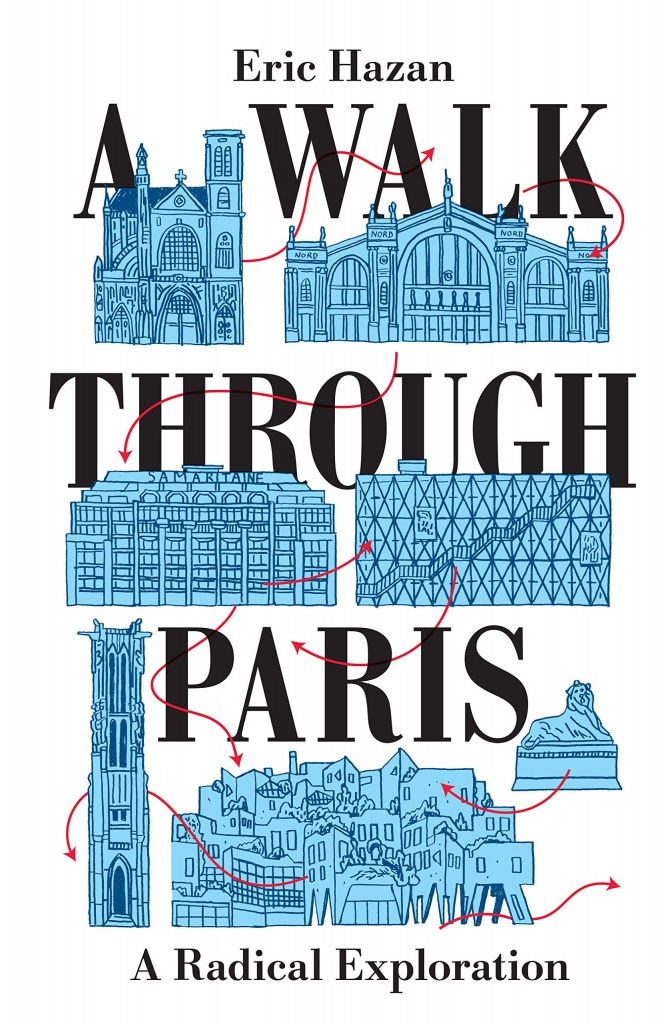
Éric Hazan’s A Walk Through Paris takes the reader on an engaging and evocative journey through the city’s radical and literary history, finds Katherine Connelly

Éric Hazan has lived many lives, all of them in Paris. Born in the city in 1936 to a Palestinian mother and Jewish Egyptian father, Hazan trained as a surgeon and worked in the hospitals of Paris before turning to his father’s trade in publishing. He is a historian of Paris, a historian of the barricade and a lifelong political activist.
In this book, Hazan takes us on a long walk through his Paris: starting from a bookshop in Ivry, he weaves his way from the outskirts through the city, past hospitals he worked in, the sites of old publishing houses and desperately defended barricades, ending at another bookshop in Saint-Denis. Hazan is conscious of the footsteps he retraces. Paris was the terrain of the flâneur – those strollers, saunterers (the word resists translation) of the urban landscape, at once a part of and apart from the crowd who found their subject in the margins, detritus, memories and dreams of the modern capitalist city. Hazan claims that all ‘the great writers of Paris’ were walkers (p.150).
To walk through Paris irresistibly recalls the stories, characters and descriptions of its great writers. Hazan sadly recalls that ‘it is no longer possible to repeat the “Les Misérables walk” that I did with my father on Sunday mornings’ (p.16). But, though much of Paris has vanished, the writers are ever present in this walk. Hazan’s ‘paper family’ (p.111), commenting and reminding him of the city’s stories are André Breton, Walter Benjamin, Charles Baudelaire, Gérard de Nerval, Honoré de Balzac, Victor Hugo and François-René Chateaubriand.
Engaging company, although personally I regret the absence of women. This is a personal book and these writers are Hazan’s favourites, it would be artificial for him to pretend otherwise, but I think he would rather enjoy walking with George Sand and Flora Tristan as well as the women in 1789 who accelerated the Revolution by dragging the king back to Paris, and those of 1871 whose defiance of French troops trying to seize the canons from Montmartre began the Paris Commune.
In Hazan’s walk the city becomes a giant text: he notes the highly decorative stone bartizans scattered on the corners of sixteenth-century buildings which form his ‘punctuation marks in the city’ (p.57). And why not? Hazan reminds us that the novelist Balzac scoured the streets for character names. Hazan quotes Charles Baudelaire, poet and archetypal flâneur, about writing and walking: ‘Stumbling over words as over paving stones’ (p.151). And here, as we trip over the debris of revolutionary action (the counter-revolutionaries covered over the paving stones after the 1848 revolution to try and stop barricades), we might ask Hazan in whose company we are walking this divided city. If Baudelaire was politically ambiguous, Balzac was certainly an old reactionary.
Hazan has an interesting answer. Like Karl Marx, who also drew tremendous inspiration from Paris, Hazan finds Balzac an insightful observer of the developing capitalist city. Although his solutions were grounded in a reactionary nostalgia for the past, Balzac was a great critic of the present. Marx was impressed by his huge endeavour to write a ‘Human Comedy’ of Paris, which sought to uncover the changing and increasingly antagonistic class relationships in the city. Similarly, Hazan is attracted to Balzac’s ‘real tenderness towards the poor, the disinherited, those left behind by life’ (p.112). He finds Balzac far more companionable than those writers who could see only irrational, inhuman mobs.
Unlike Balzac, Hazan does not indulge in a reactionary nostalgia. Frequently, it is the continuities he identifies with the past that reveal the urgency of political change in the present. In a striking moment in the text, passing a hospital he used to work in Hazan recalls the anti-Semitism he faced when trying to train as a surgeon and the hospital’s system of relegating Algerian patients to the basement. Hazan sees in the fear of the working-class crowd the roots of anti-Semitism in France and of Islamophobia today:
‘The same mixture of contempt and fear appears in their discourse, always with a police component, a more or less explicit appeal for a muscular response to those who trample on our precious “values”’ (p.177).
At times acerbic, at times witty about the changes imposed on his city, Hazan also sees a ruling elite that are banking on the ‘ever-lasting resignation’ of its working-class. But banking systems can’t acknowledge they are fatally contradictory and Hazan sees in Paris a ‘multi-coloured proletariat’ (p.177) with the potential to change their city.

